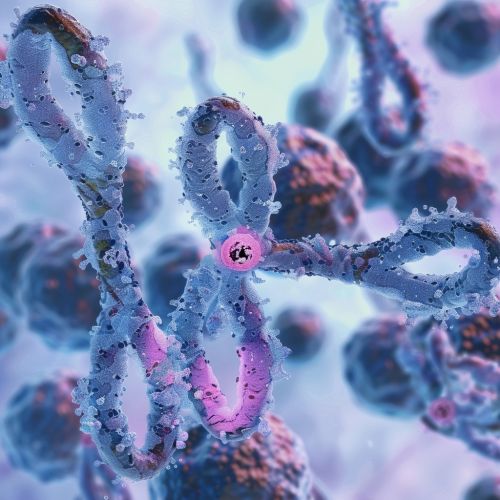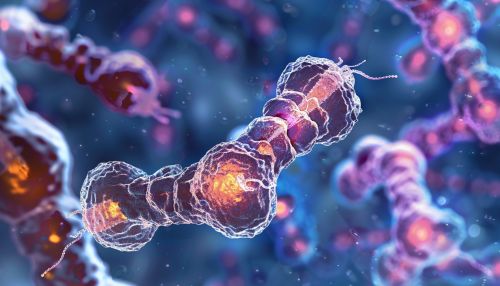Telomere theory of aging
Introduction
The Telomere Theory of Aging is a biological theory that posits the gradual erosion of telomeres, the protective ends of chromosomes, as a primary driver of cellular and organismal aging. This theory is rooted in the observation that telomeres shorten with each cell division, and when they reach a critical length, the cell enters a state of senescence or apoptosis, contributing to the aging process.


Telomeres and Cellular Aging
Telomeres are specialized structures located at the ends of chromosomes that protect the genetic material from degradation. They consist of repetitive DNA sequences and associated proteins, forming a cap that protects the ends of chromosomes from degradation and fusion with neighboring chromosomes.
The length of telomeres is maintained by the enzyme telomerase, which adds telomeric DNA to the ends of chromosomes. However, in most human cells, telomerase activity is insufficient to fully compensate for the loss of telomeric DNA during cell division, leading to a progressive shortening of telomeres.
When telomeres reach a critically short length, the cell enters a state known as replicative senescence, in which it loses its ability to divide and function properly. This state is believed to contribute to the aging process by causing a decline in the regenerative capacity of tissues and organs.
Telomere Shortening and Organismal Aging
In addition to its role in cellular aging, telomere shortening has been implicated in organismal aging. Studies have shown that the rate of telomere shortening is accelerated in various age-related diseases, including cardiovascular disease, Alzheimer's disease, and certain types of cancer.
Furthermore, genetic studies have revealed that individuals with shorter telomeres have a higher risk of premature death, suggesting a direct link between telomere length and lifespan. However, it is important to note that while telomere shortening is associated with aging, it is not the sole determinant of the aging process.
Mechanisms of Telomere Shortening
The primary mechanism of telomere shortening is the end-replication problem, which arises from the inability of the DNA replication machinery to fully replicate the ends of linear chromosomes. This is due to the fact that the DNA polymerase enzyme requires a primer to initiate DNA synthesis, and once the primer is removed, a small portion of the DNA at the end of the chromosome is left unreplicated, leading to telomere shortening.
In addition to the end-replication problem, other factors can contribute to telomere shortening, including oxidative stress and inflammation. These factors can cause damage to the DNA, leading to the loss of telomeric DNA and further accelerating the process of telomere shortening.
Implications for Aging Interventions
The telomere theory of aging has significant implications for the development of interventions to slow down or reverse the aging process. One potential approach is to enhance the activity of telomerase, the enzyme that extends telomeres.
However, this approach is not without risks, as increased telomerase activity has been associated with an increased risk of cancer. Therefore, a balance must be struck between maintaining telomere length and preventing uncontrolled cell growth.
Another potential approach is to reduce the rate of telomere shortening by minimizing exposure to factors that accelerate this process, such as oxidative stress and inflammation. This could be achieved through lifestyle modifications, such as a healthy diet and regular exercise, as well as through the use of antioxidants and anti-inflammatory drugs.
Conclusion
In conclusion, the telomere theory of aging provides a compelling explanation for the cellular and organismal aging process. While it is not the sole determinant of aging, telomere shortening plays a significant role in the decline of cellular function and the onset of age-related diseases. Future research in this area holds great promise for the development of interventions to slow down or reverse the aging process.
